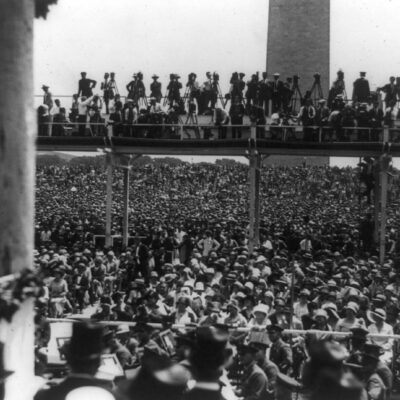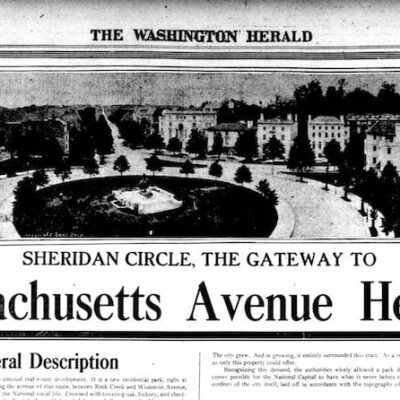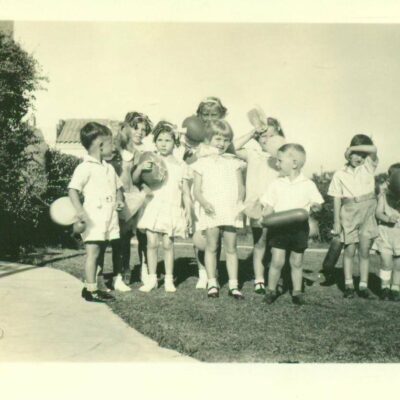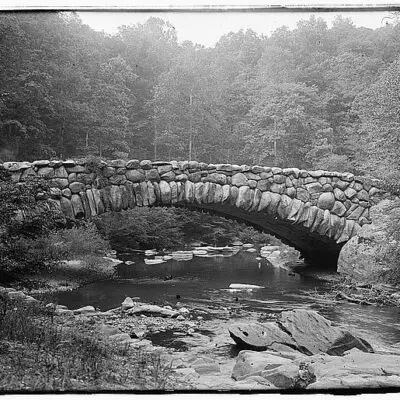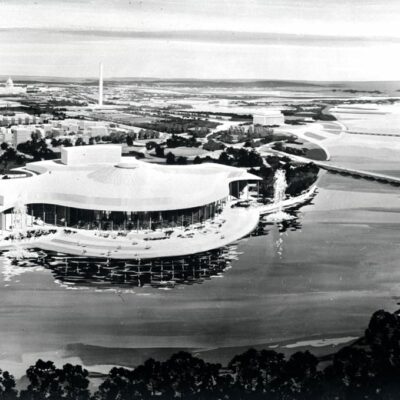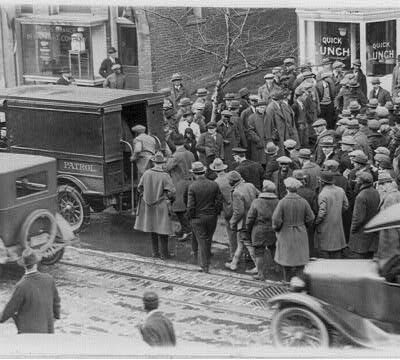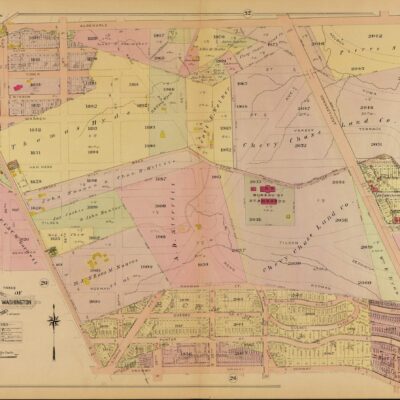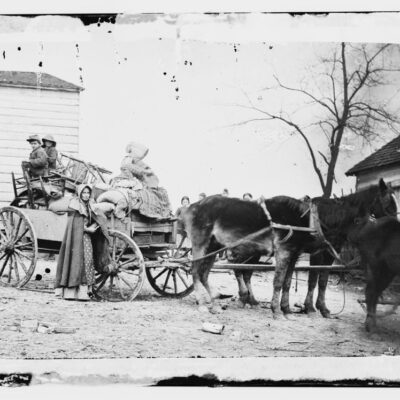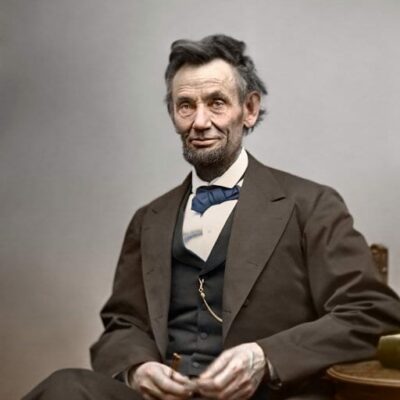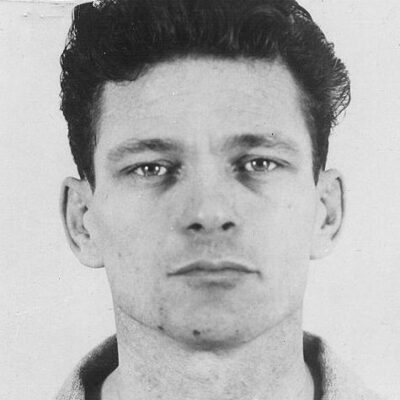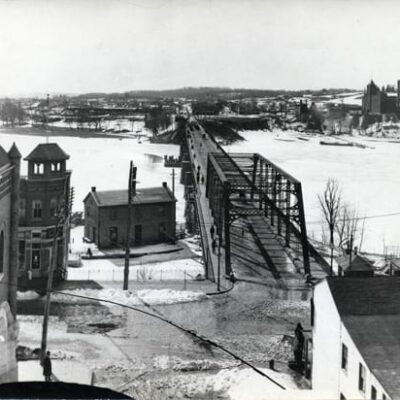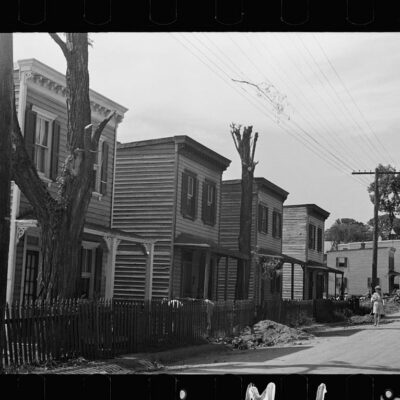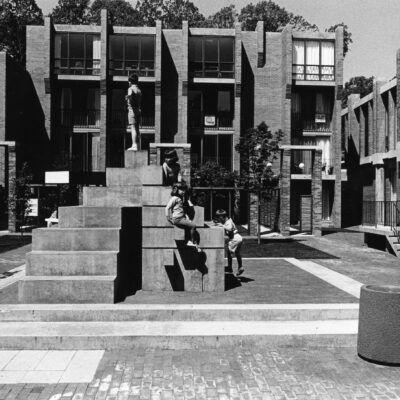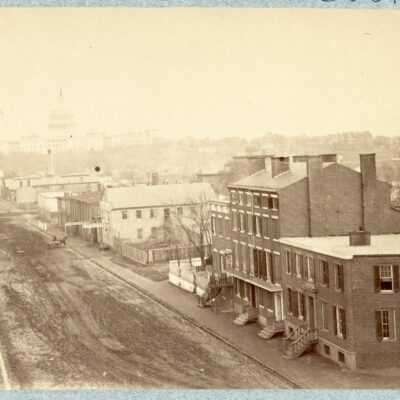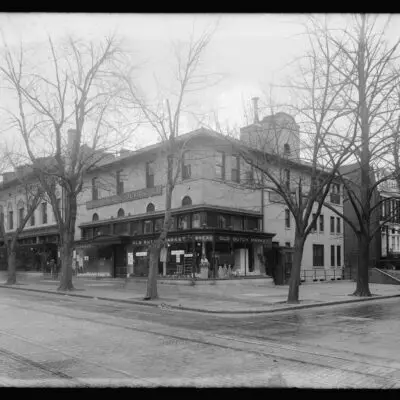Look at the complete destruction of the building. This was the McCrory five-and-dime store at 416 7th St. NW just after it exploded in the afternoon of November 21st, 1929. The blast and fire killed six and injured nearly 30 others, throwing debris all the way across the street. Firemen and ambulances from across the District came to help put out the fire and rescue the survivors.
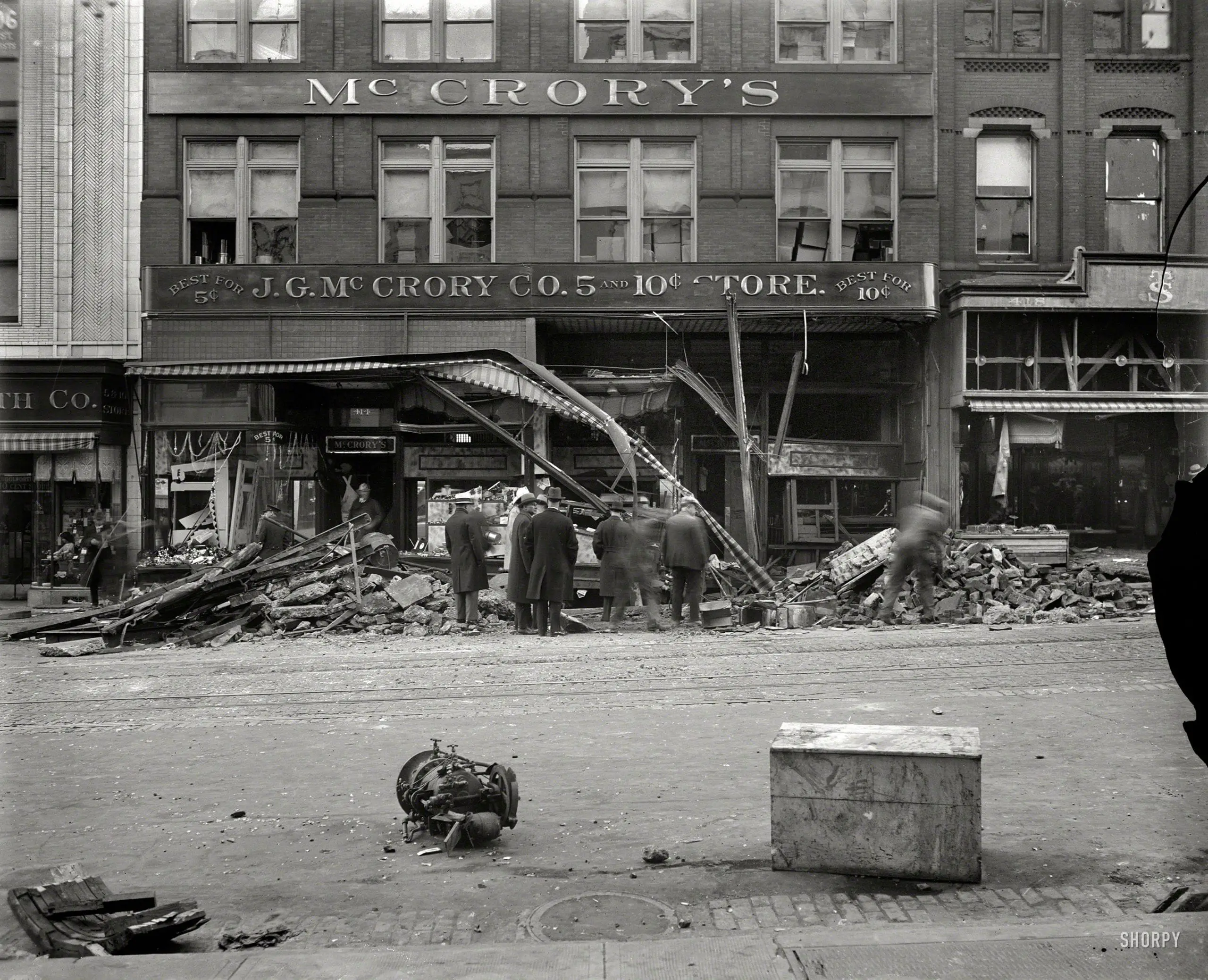
The blast was the result of a faulty, old boiler in the basement of the building, which hadn’t been inspected since it was installed in 1920. At the time, there was no regulation in the D.C. building code mandating the inspection of hot water tanks like this one. The tank that exploded was slight over five feet tall and three feet in diameter, holding around 500 gallons of water. The bottom blew out first, rocketing the tank upward, right into a steel beam supporting the sidewalk, turning the massive projectile into an explosion of shrapnel, ripping through the building.
The tank was full of boiling water, which immediately turned into steam, expanding with great force, cracking the pavement, sending bits of concrete and steel flying through the air. Wilbur Smith, a man standing across the street, was violently thrown against an automobile, fracturing his skull.
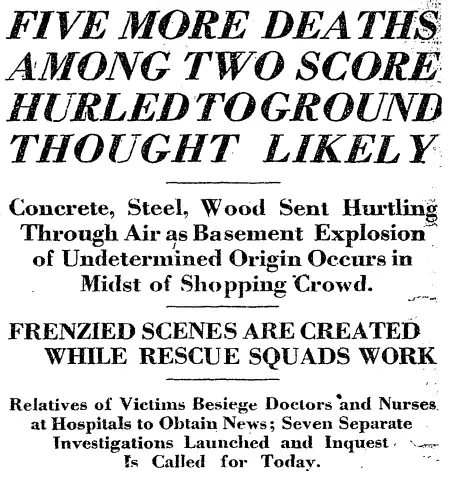
Several hundred others were near the scene at the time and miraculously escaped serious injury, given that the accident occurred right in the middle of a busy fall afternoon. Below is a graphic description of the event from The Washington Post, printed the following day.
Struck down as they walked along the street in front of the store, the victims of the explosion never had a chance. It was as though an earthquake had suddenly seized the entire block. Pieces of concrete, steel and wood shot from the store front with terrific force, sweeping all obstacles before them and the sidewalk in front of the place collapsed with a loud roar.
-ad 199-As the dust slowly settled into the yawning cavity in front of the McCrory store, a scene of indescribable horror was presented to the first rescuers who rushed into action.
Men, women and children lay in the street, where they had been thrown by the force of the explosion. Blood-covered, the most seriously injured lay inert while others, still conscious, groaned and shrieked. Hats, shoes, clothing and personal effects of the victims were strewn for many feet in all directions as huge pieces of debris from the store front covered other articles torn from the grasp of the stricken.
Such a horrific accident.
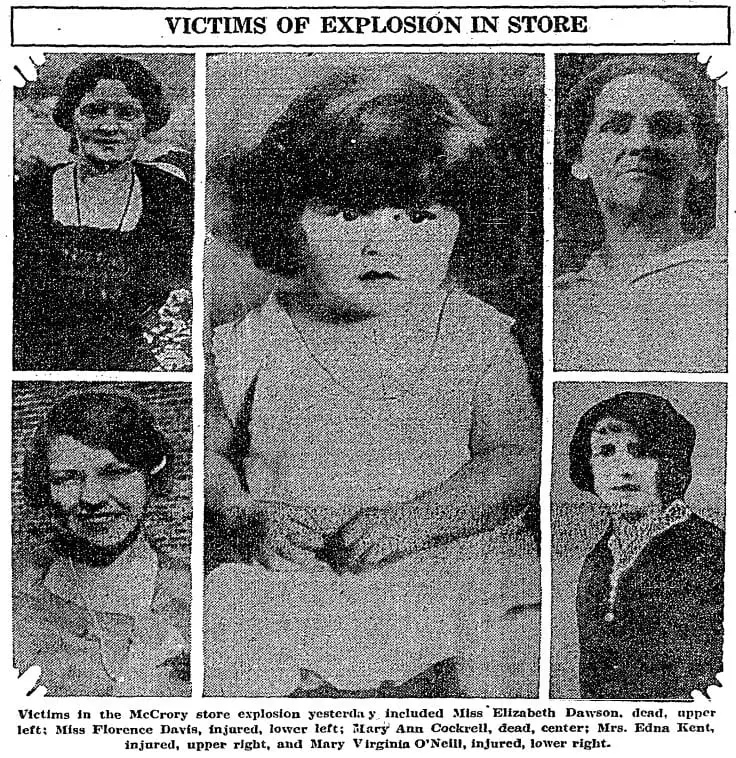
No store employees were killed and only three were injured, none seriously: Olga Shipley (18) of 3560 Alton Pl. NW, Florence Davis (18) 701 South Lee St., Alexandria, Mary Virginia O’Neil (21) of 61 East Maple St., Alexandria.
One of the crazier stories of witnesses — and one of extreme good fortune — was that of L. E. Donaldson. He was a few doors away from the blast when it occurred, and in his witness testimony, he mentioned that he had also been at the scene of the Knickerbocker Theater disaster in 1922. At that time, he had just purchased his ticket and was on his way into the theater when the roof caved in under the weight of the snow, killing 98 people.
Another man was found an hour after the explosion in the elevator shaft of the store. He recalled behind struck by an automobile, and awoke to find himself in the shaft. He was unable to recall his name and was sent to the hospital to be treated for shock.
